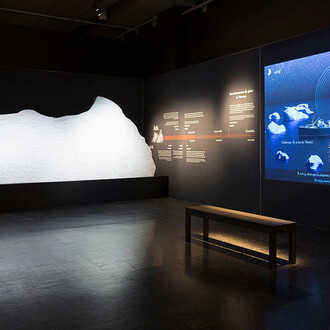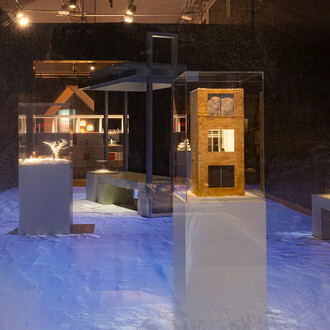The second half of the 19th century witnessed the founding of many institutions devoted to the teaching and dissemination of art, institutions that would shape cultural life for nearly an entire century. These also contributed to the development of art genres such as portraiture, still life and genre and history painting, while promoting a certain academic tradition and orchestrating the reception of art in institutional salons. Around the same time, taking a trip to Europe to study art became an indispensable step in the artist’s training.
In Québec, the years from 1880 to 1930 were an era of commemoration, a period in which subscriptions, national and international competitions and a succession of public events paid tribute to the builders of our young society. Many artists turned away from long-established practices to make large-scale works specifically for public buildings.
In this room, visitors will see an artist’s studio—that of Napoléon Bourassa—a political space and a religious space that, taken together, show the many forms assumed by art practices associated with commemoration. The issues involved in the visual construction of history are explored through an examination of the social role that artists have played in this process. How, for example, does one invent the face of a historical character without knowing what the person really looked like? How do artists imagine major historical events? Why do they decide to depict them in a Romantic, Realist or even Impressionist light? What roles do fiction and dreaming pay in the representation of history? How are they made visible? And how does our current imagination give them back their visibility?
















